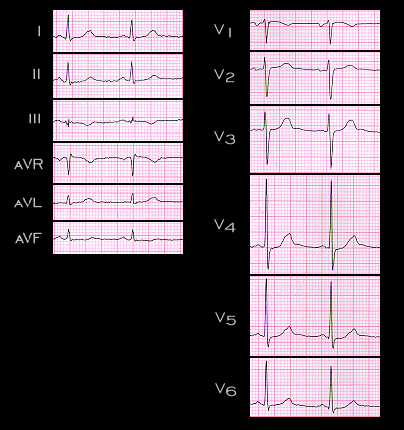
As discussed in chapter 2, rhythms that originate in the sinus node activate the atria in a superior to inferior, right to left, and anterior and then posterior direction. This activation sequence results in the normal P wave; i.e. one that is positive (upright), in leads I and II, negative (inverted) in lead aVR and usually biphasic in lead V1 with the positive (right atrial) component preceding the negative (left atrial) component. This ECG demonstrates the normal P wave.
